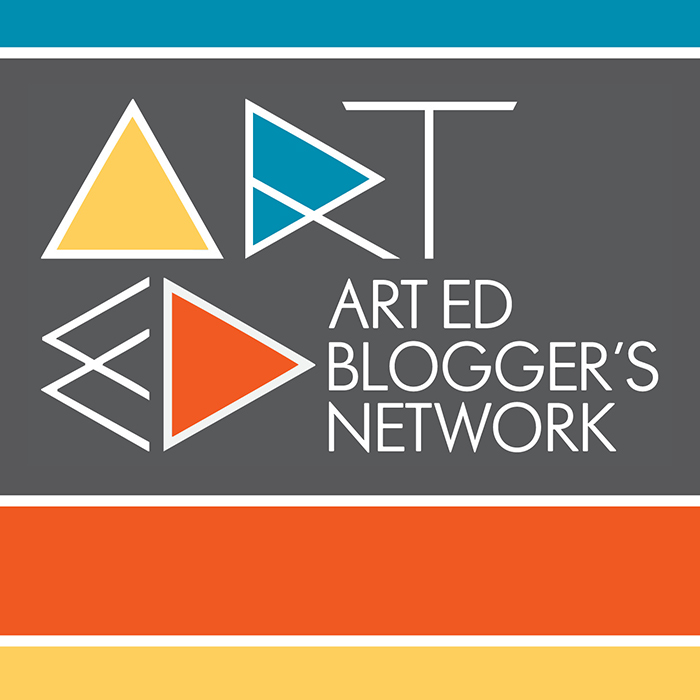Paper is a staple material used by art educators of all age levels, and with it comes a multitude of ideas for projects, planning, and exploration. Depending on the grade levels you teach, there are plenty of ways to use your imagination when creating paper-based projects and collage.
When purchasing paper for your class projects, you have many size options, the most common being 9 x 12 or 12 x 18. Many art teachers trim down their paper for project sizes or templates, which creates extra paper trimmings. These trimmings are the best to use for collage paper projects. When I was teaching from a cart, I saved box lids from the copy machine paper and created bins for each color of scrap paper. In using this method, I was able to use every last bit of paper down to the last scrap.
Paper Storage: If you save multiple colors of paper for projects, brainstorm a way to store them. You can create boxes for each color (or color combinations), stacked shelves, or bins. When I traveled, I created a separate cart to hold all the different colored scrap boxes. Now that I’m in a classroom, I used book holders for my paper scraps that fit nicely into a shelf.
Collage: Project ideas are infinite, and in knowing your students, you can develop a project that sparks their interests while teaching important concepts. One type of paper project is a collage. A collage is an artwork made by attaching various materials, such as photographs, paper, or fabric onto a backing. You can create a collage in a landscape, still life, portrait, abstract art, or various images unified together. One of the concepts I love to teach with collage projects is perspective, enhancing foreground, middleground, and background details. One example I teach is a pumpkin patch with 3rd grade. In using colored paper and scraps, students learn how to place background details first before adding the middle ground and foreground details.
Painted Paper: Another way to encourage creativity with collage projects is by making painted paper. One method is using Geli plates, where students can create monoprints of texture and pattern on paper to use for collage projects. Geli plates create a monoprint by rolling paint (either tempura or acrylic) onto the plate and removing paint to create an image prior to placing paper on top for the print. Once you pull the paper off the plate, you have a print you can use for collage projects! You can also use other methods to paint paper, such as marbling, or stamping.
Mosaics: You can create a project that encourages pattern, repetition, and patience by making a paper mosaic. A mosaic is a picture or pattern produced by arranging together small colored pieces, which could be stone, tile, glass, or in this case, paper! Paper mosaic projects can be created by ripping or cutting small pieces of paper and arranging them to create an image. One artist we like to visit with mosaic projects is Alma Woodsey Thomas, a African-American abstract painter. Alma’s paintings titled “Eclipse” and “Starry Night with Astronaut” are two popular images with our elementary students because they enjoy the colors, patterns, and ideas behind the creation of the paintings. When creating a mosaic project with your students, make sure the size is appropriate for their age level. In reflection from prior lessons, I notice that younger students can lose interest quickly when they don’t see their progress coming along in a timely fashion.
Paper Sculptures and Origami: You can encourage creating 3-dimensional artworks using paper too! 3-Dimensional art can be achieved using paper and a few folding and gluing techniques! When imagining paper sculptures, many people think about origami, which is the Japanese art of folding paper into decorative shapes and figures. You can also create paper sculpture projects, like spheres with strips of paper, or relief projects with folded or textured paper. 3D paper projects can be started as early as Kindergarten. After my students learn how to create 3D out of paper, they love to make their own pop-up projects on their own!
Handmade Paper: Let’s say you used your paper scraps to the point where they need to be tossed or recycled. If you have the materials to make handmade paper, consider recycling your scraps by teaching students how to create hand-made paper! Just by using a blender, strainer, and water bins, you can re-use certain papers to create something new! In the past, I’ve done handmade paper with after school art classes because the process can get messy.
If you run short of paper project ideas for the grade level you teach, don’t hesitate to visit art teacher groups on social media, blogs, or pins on Pinterest!


















































